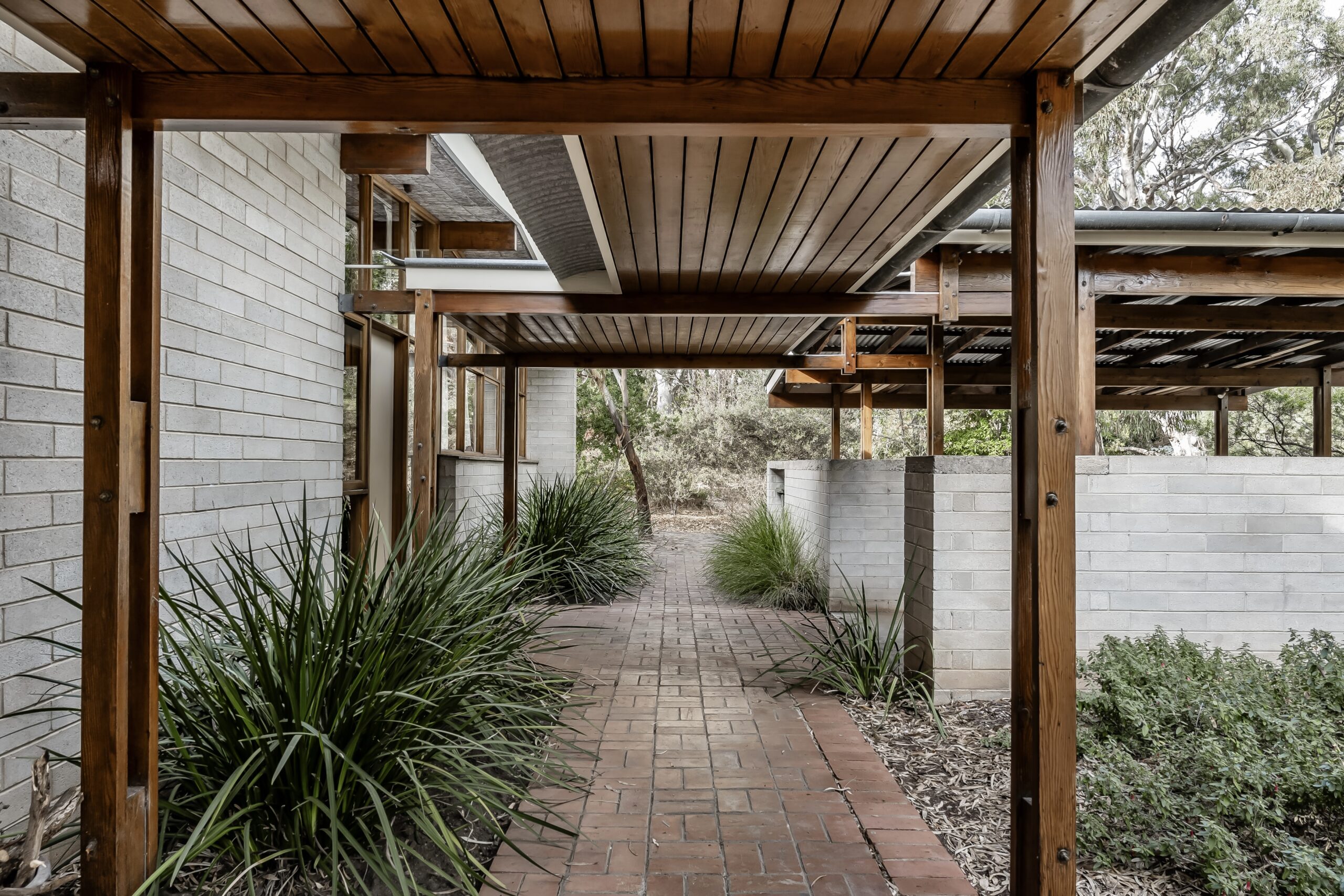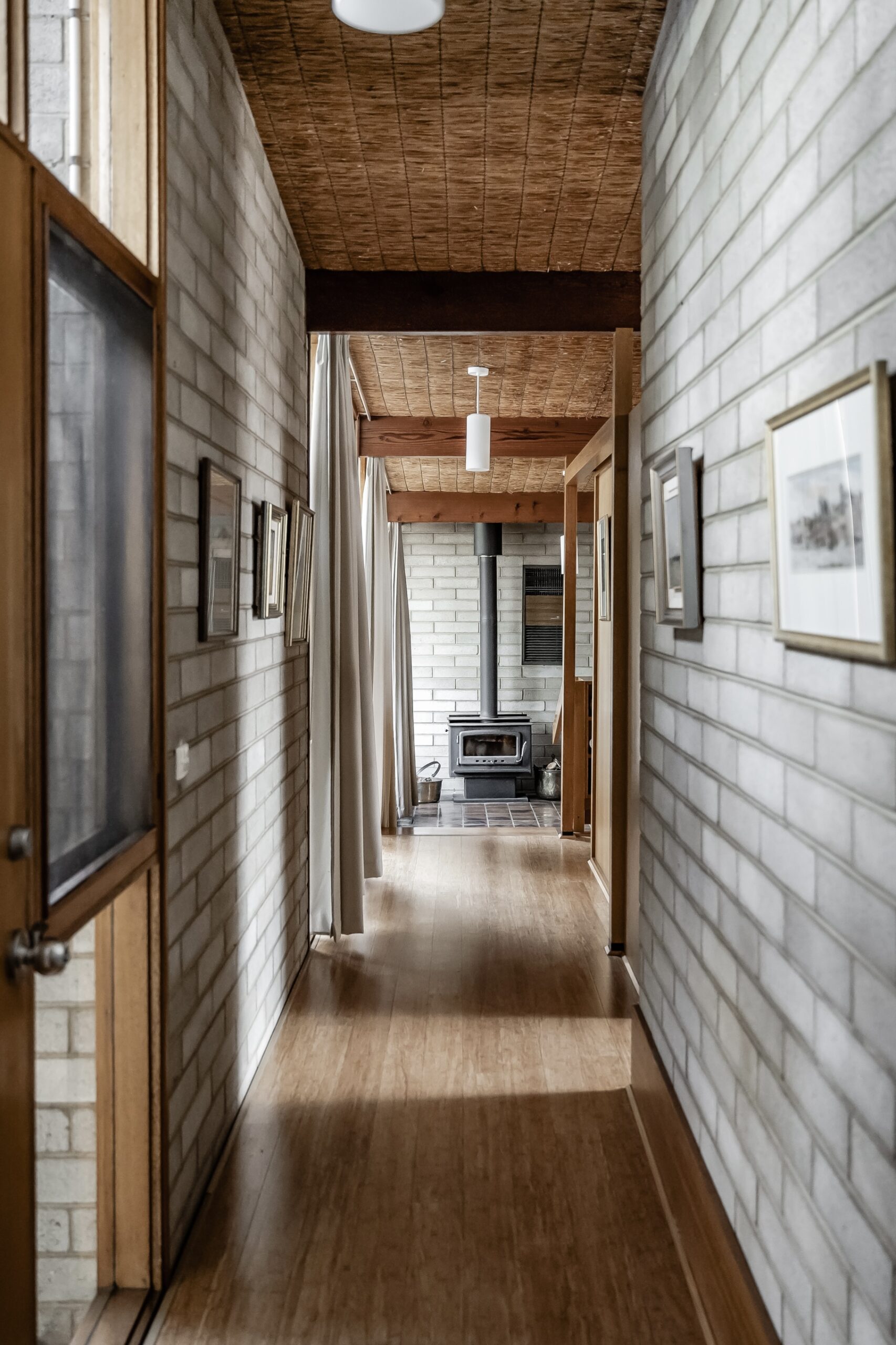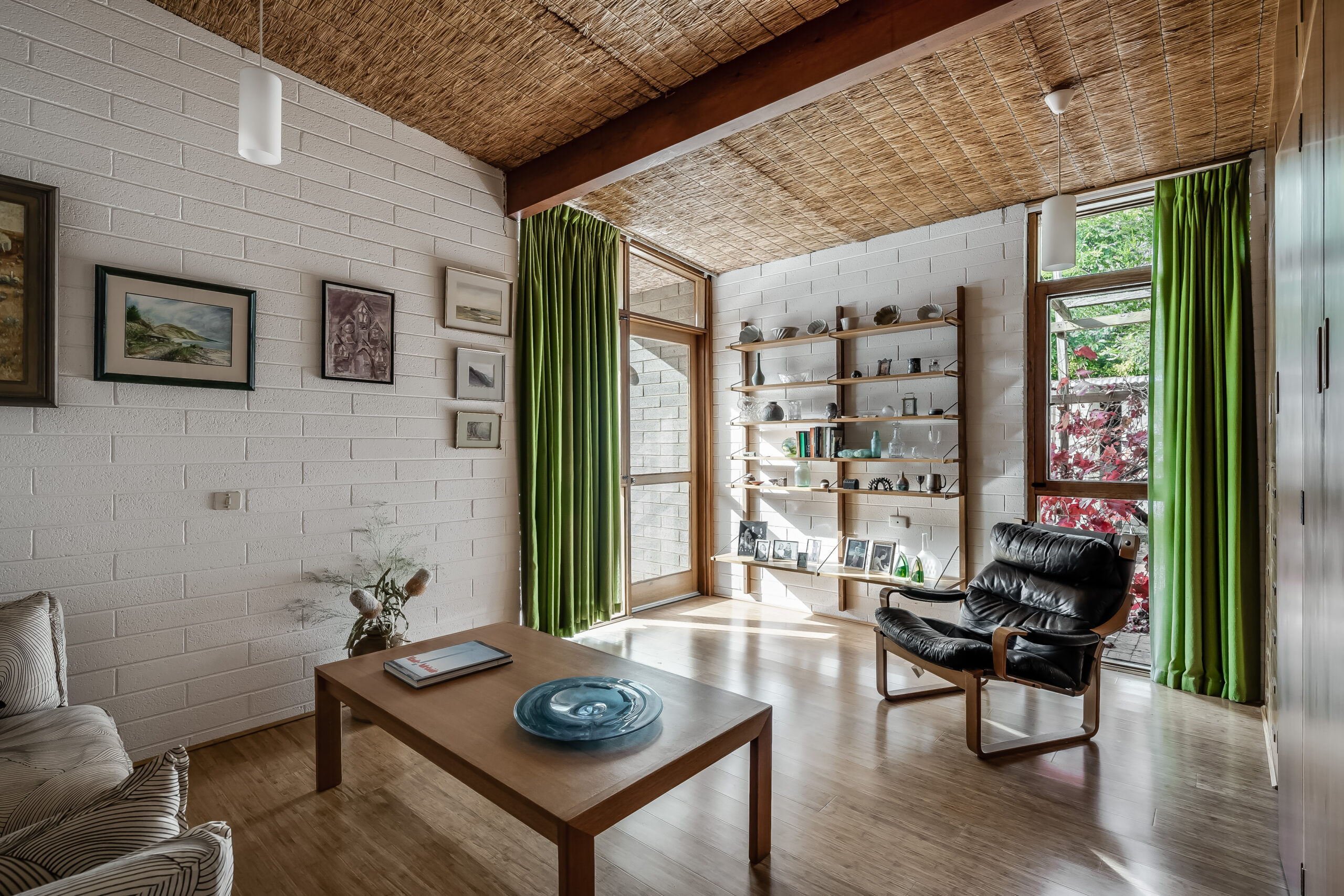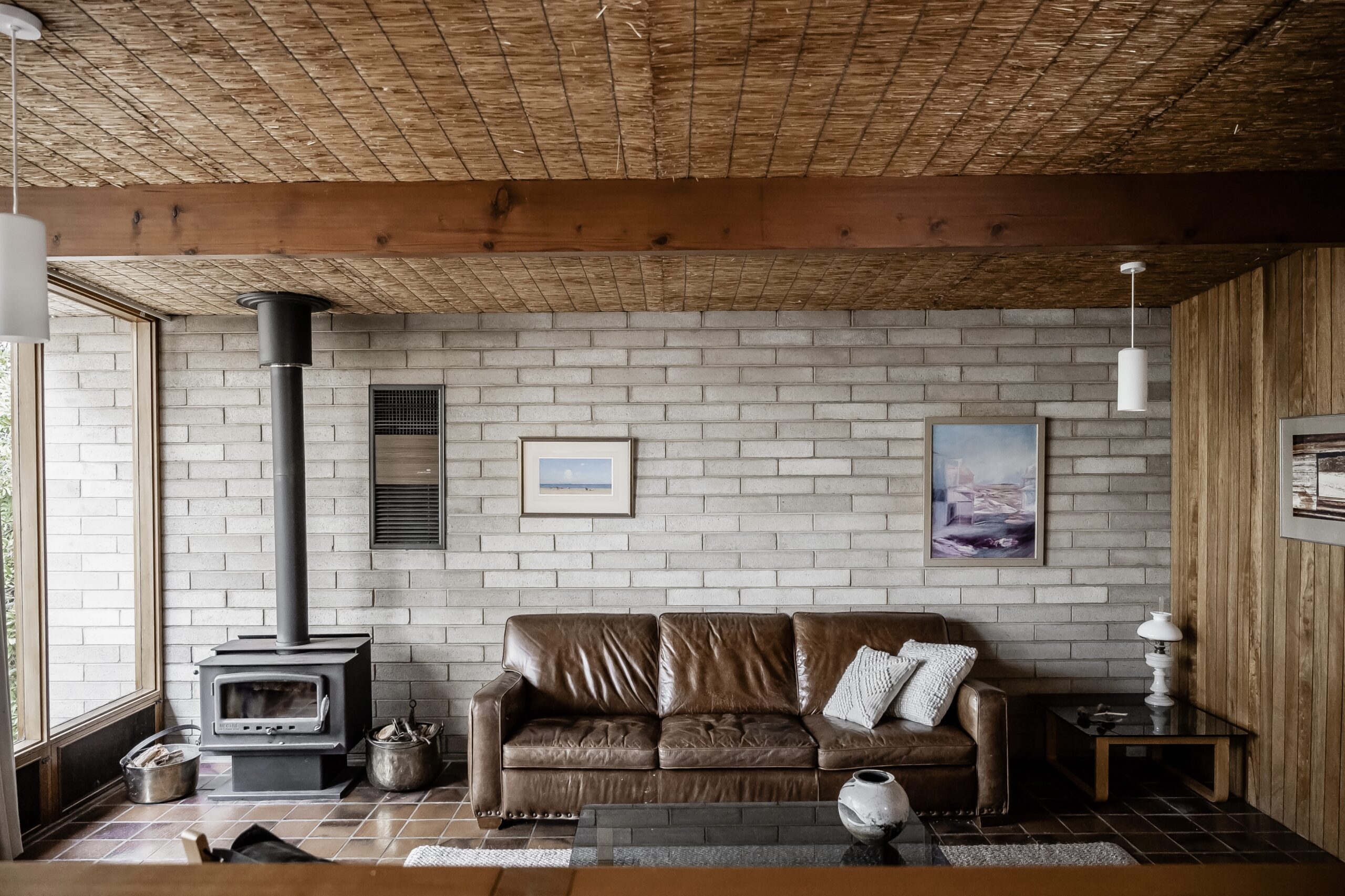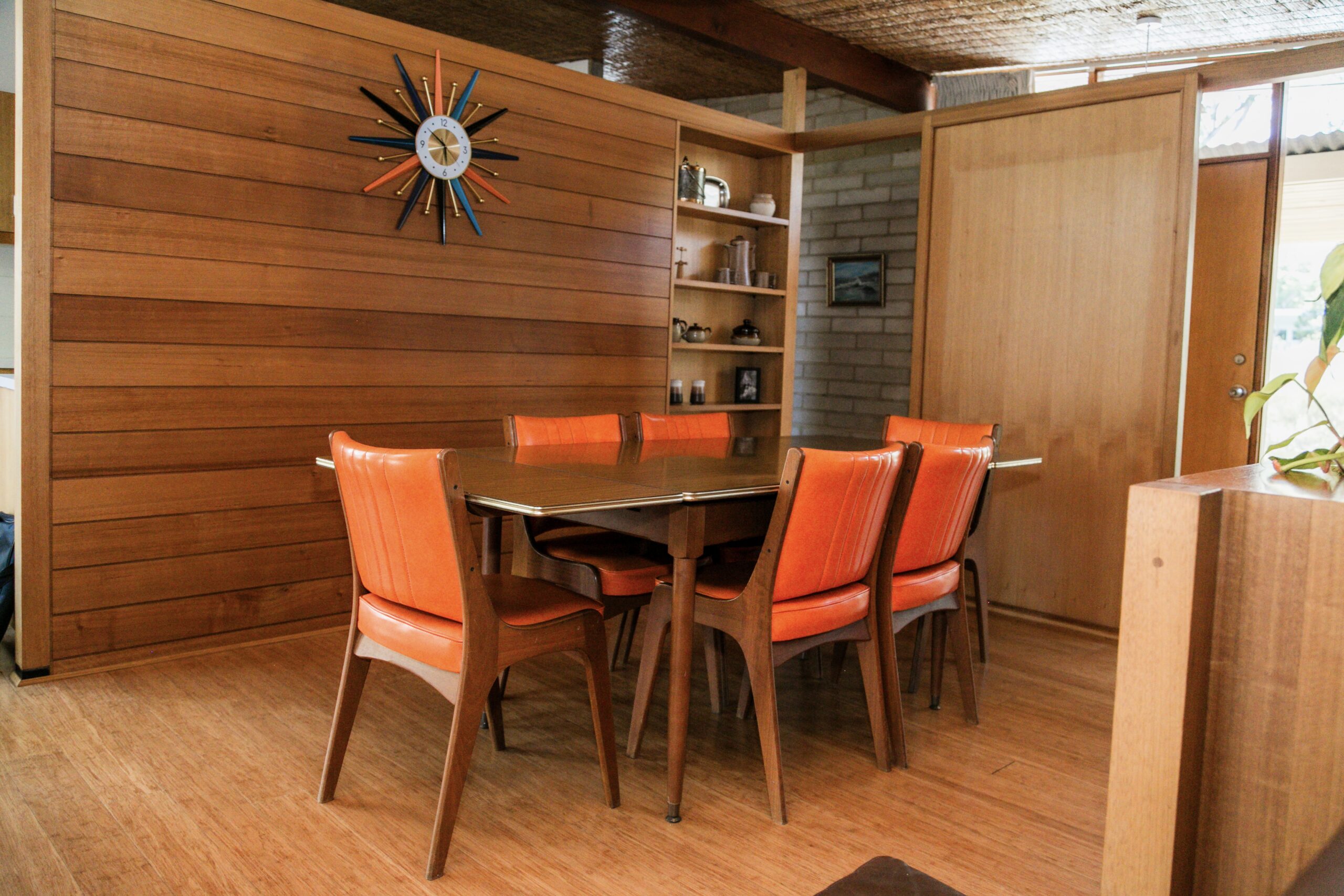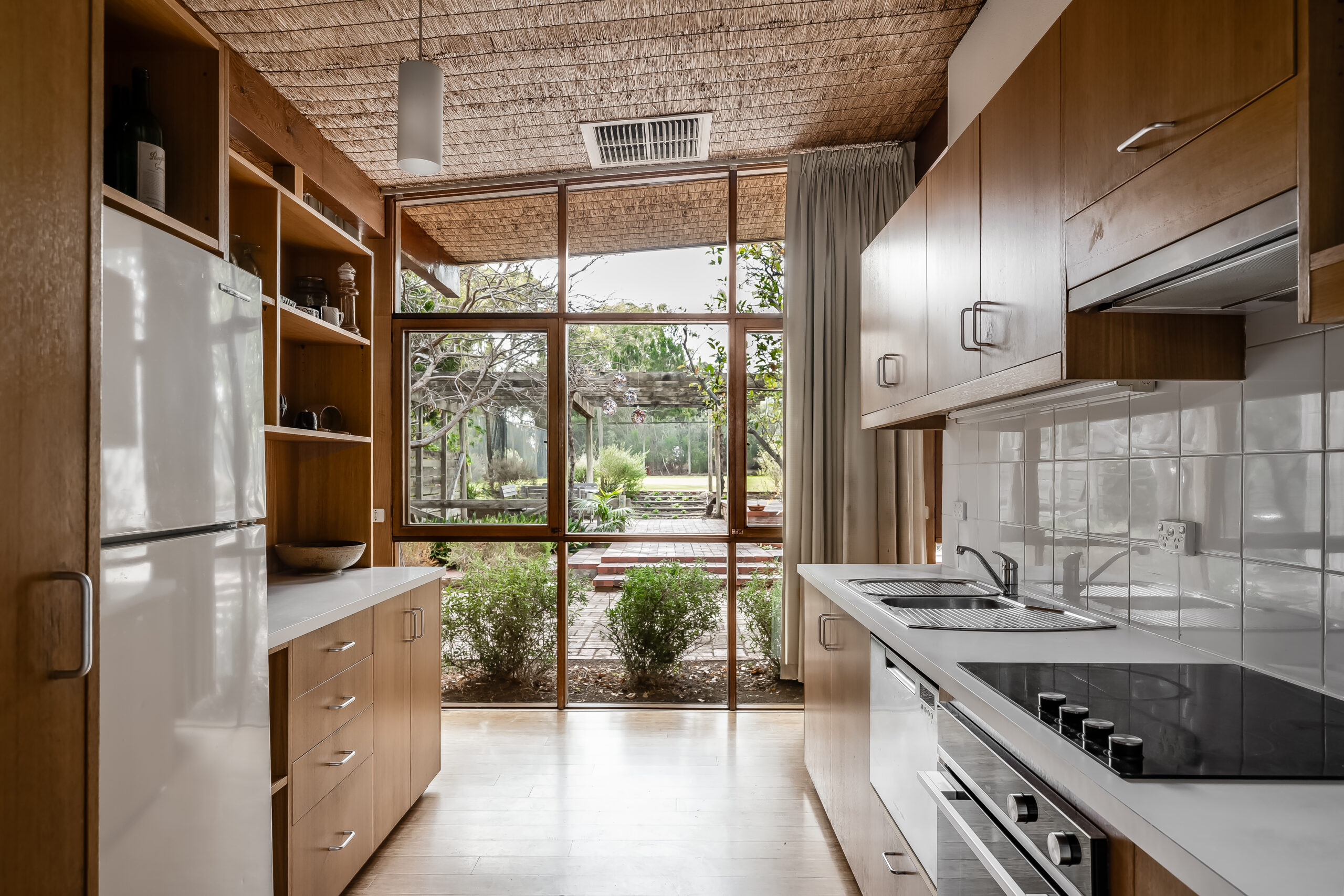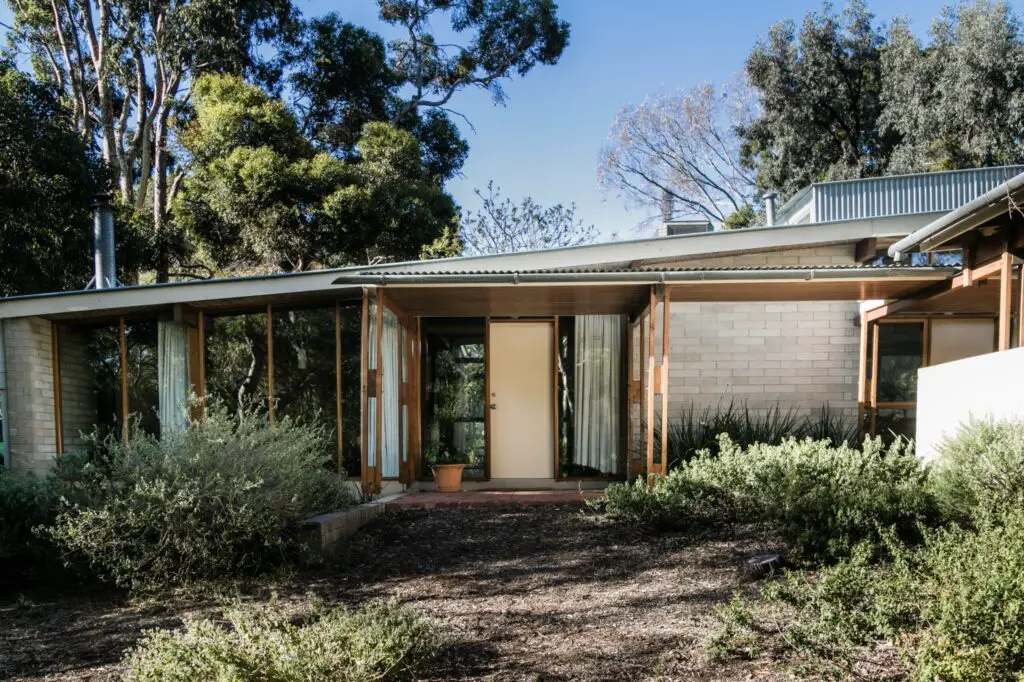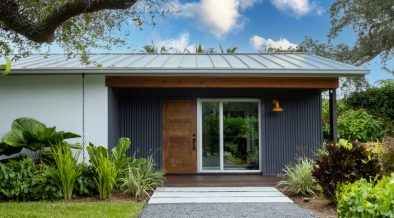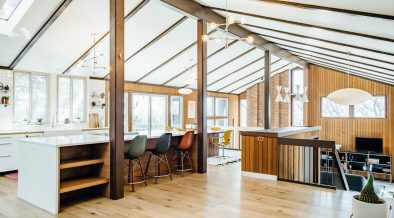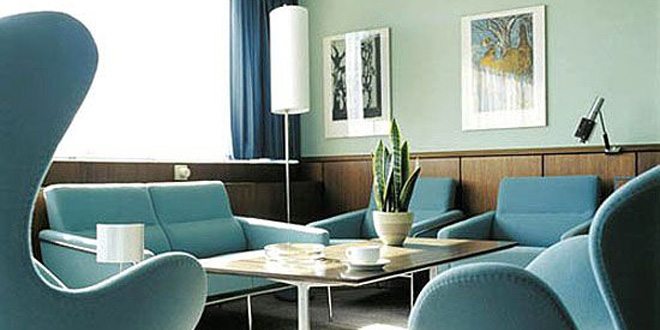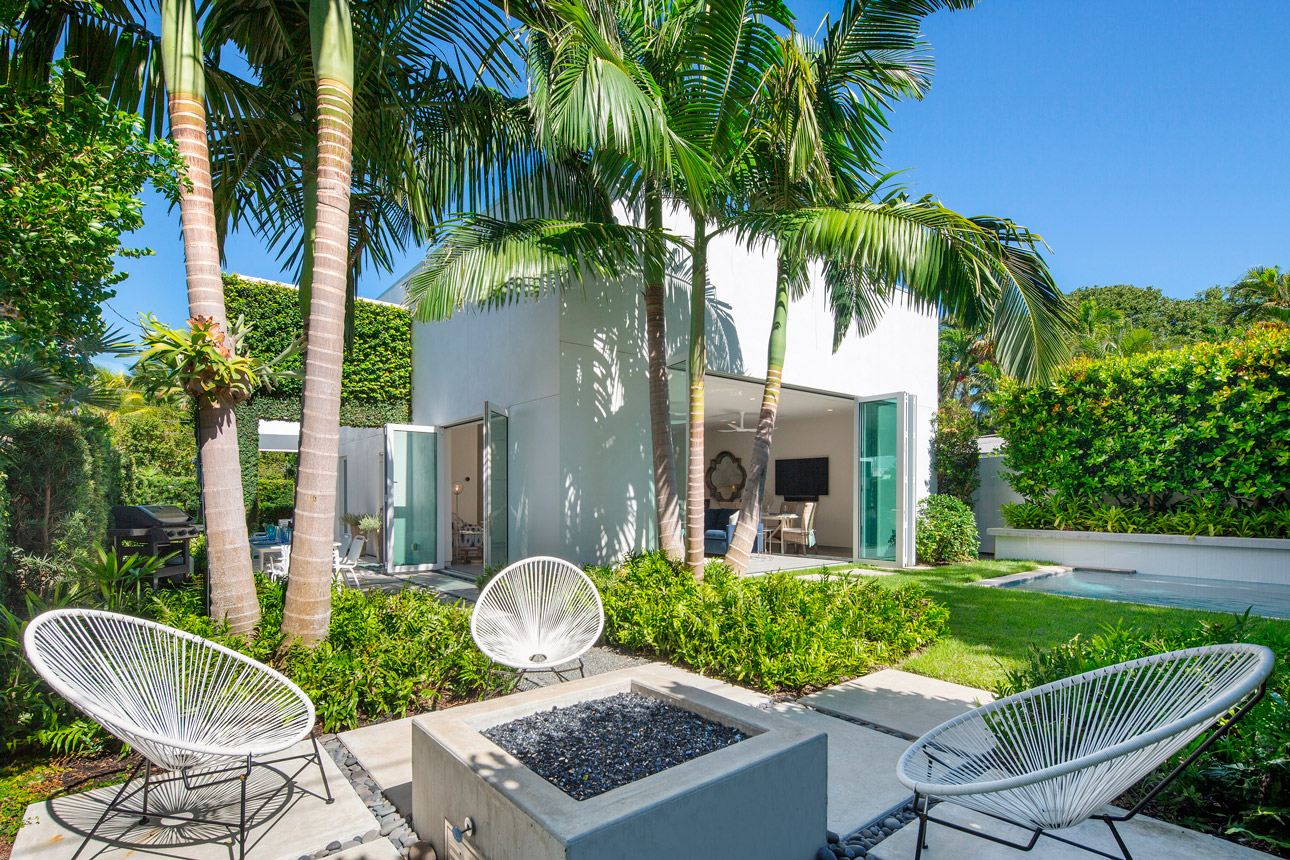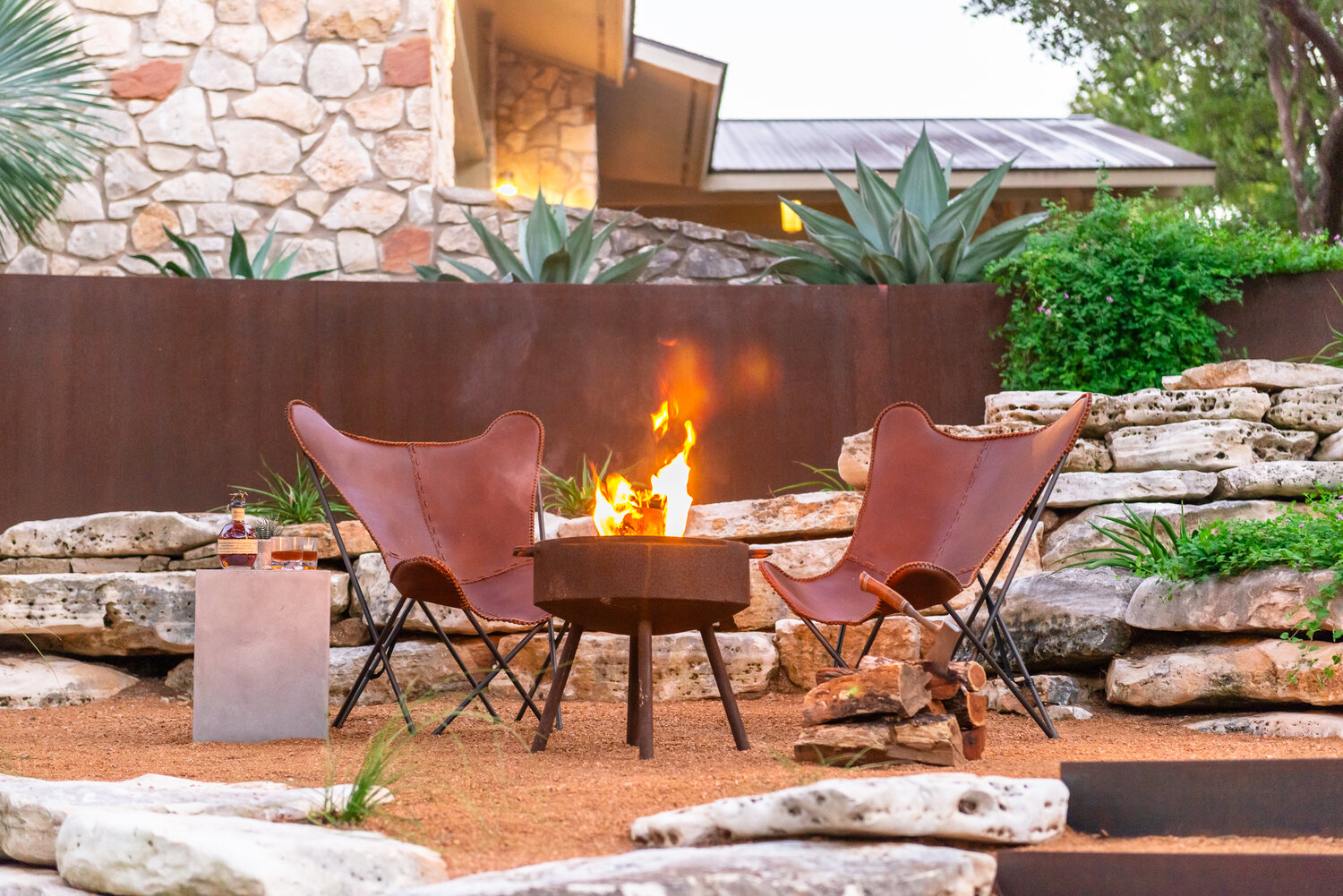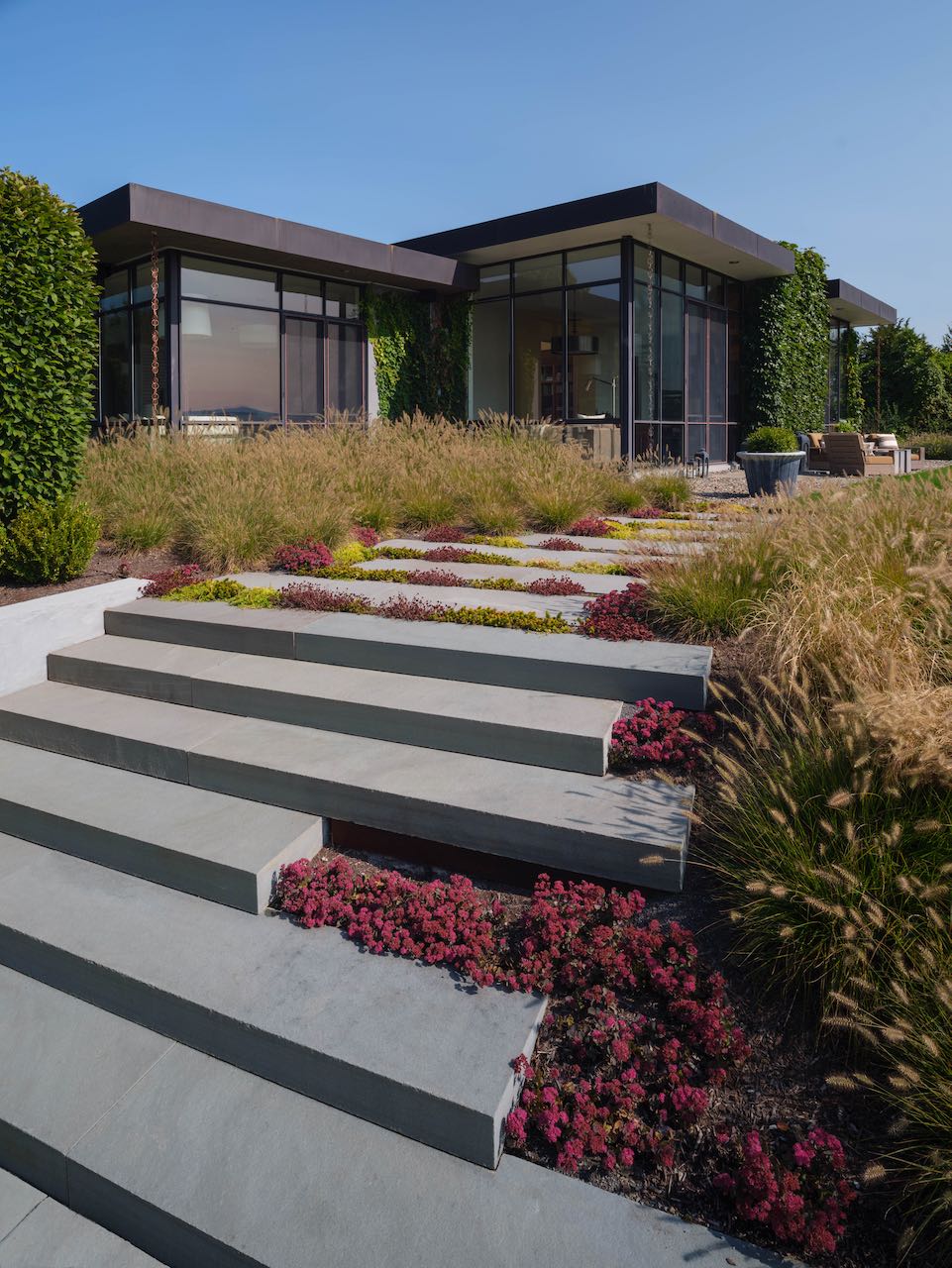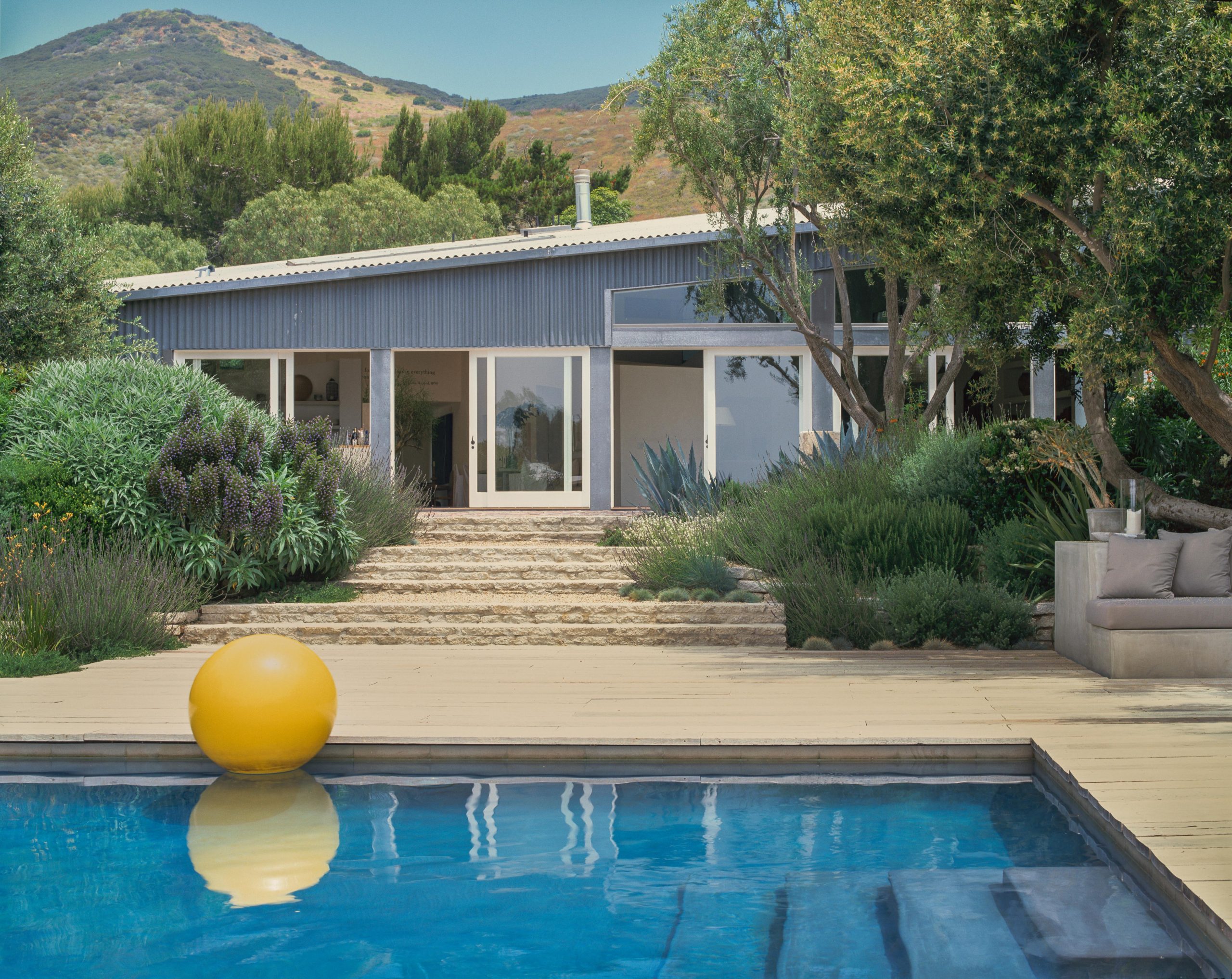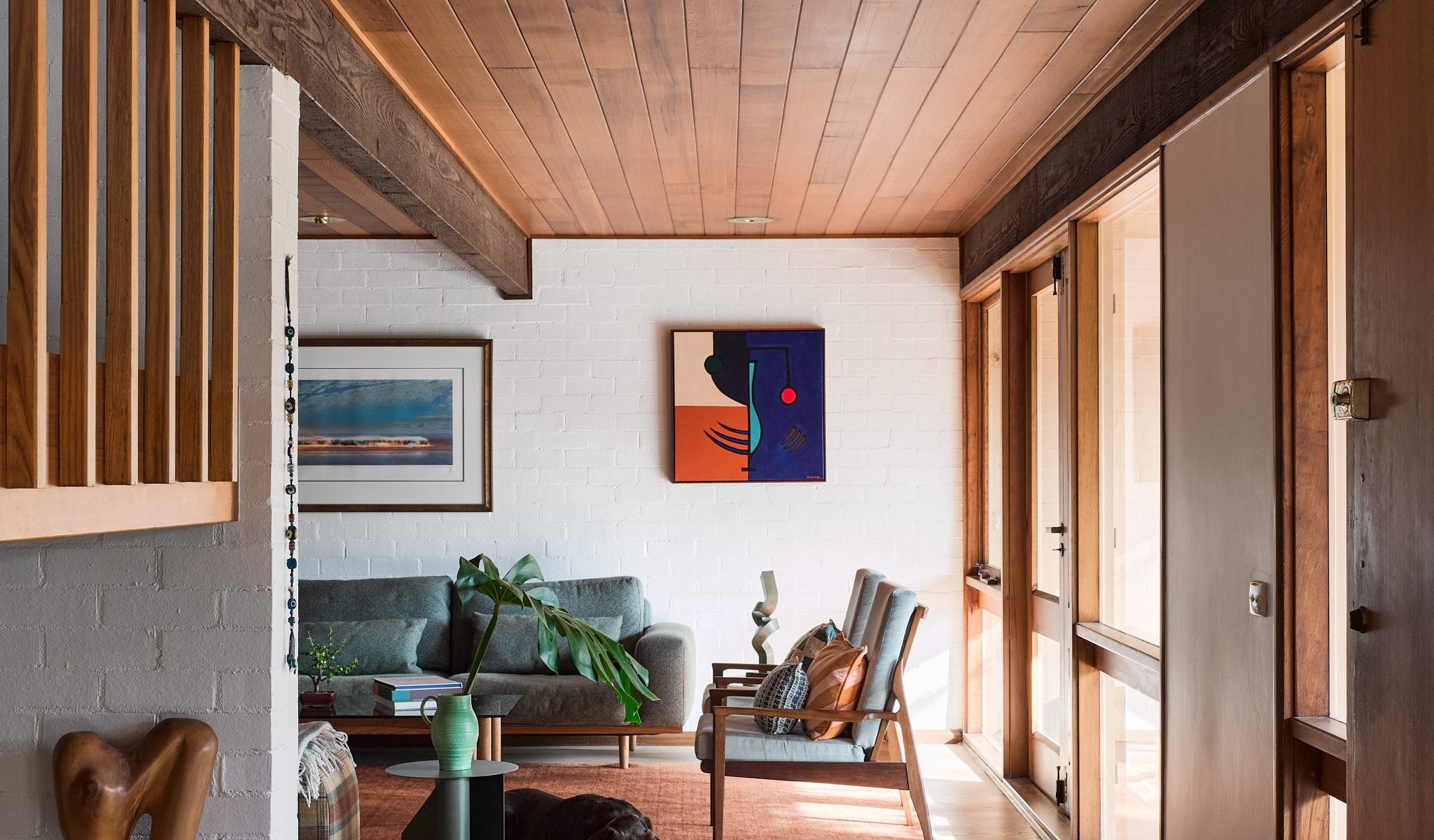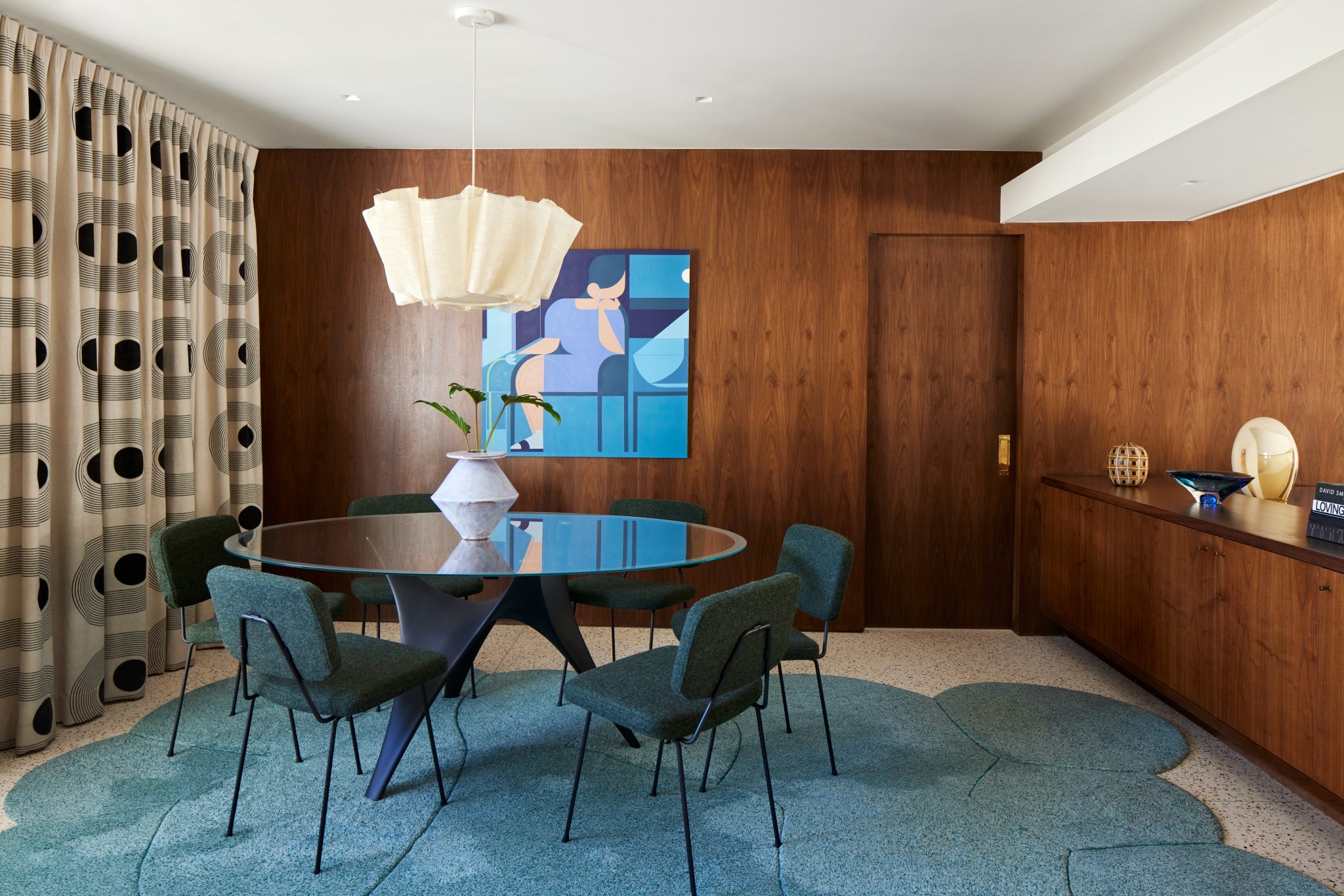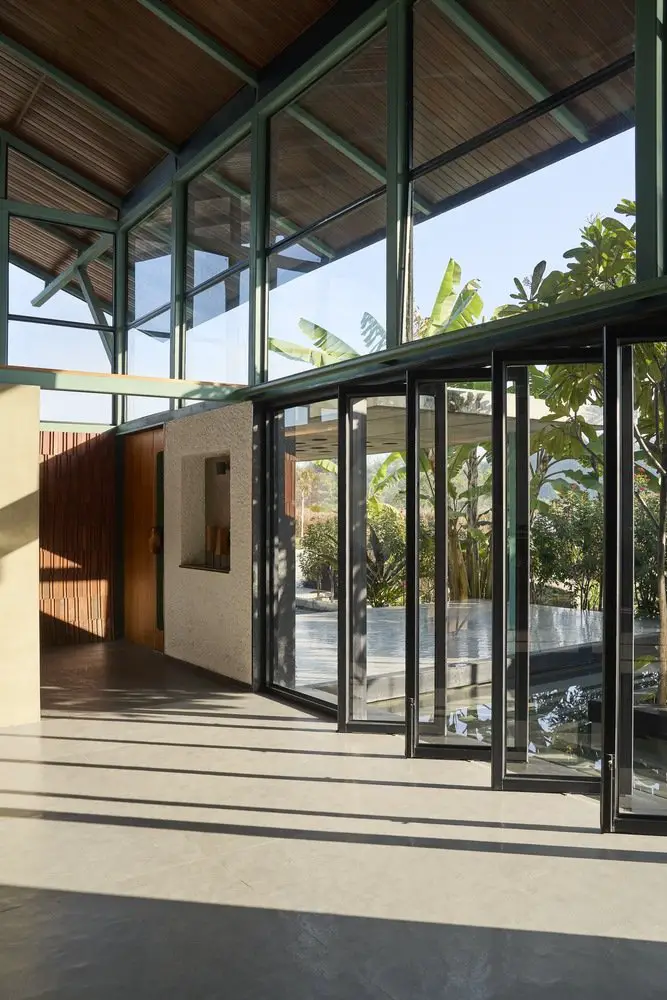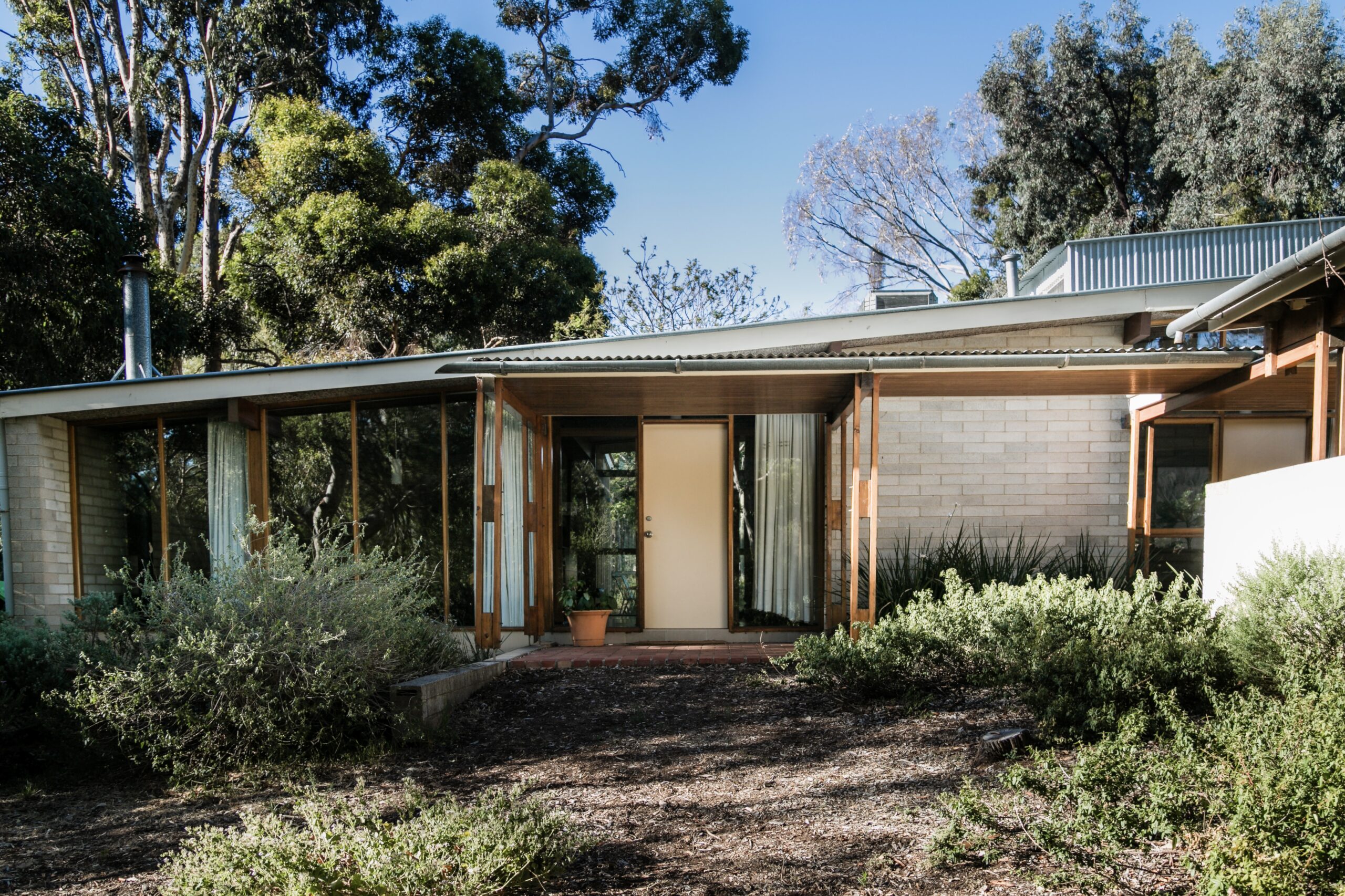
Jess Fitzgerald, the home’s current owner, speaks with the kind of affection that comes from truly living with a piece of architecture. She notices the way light changes a room over the course of the day, the feel of timber under her fingertips, and the subtle comfort in how air moves through the space. Her perspective is shaped not just by appreciation for its design, but by years of understanding how it responds to everyday life.
From the moment you step inside, this mid-century home seems to breathe. Sunlight pours through tall glass panes, casting slow-moving patterns across timber walls, while a quiet breeze threads its way through carefully positioned openings. It’s the kind of space that makes you pause, then exhale—a place where architectural vision and daily life meet in perfect harmony.
That harmony is the legacy of Robert Dickson, a South Australian architect whose influence remains etched across the state’s streetscapes and public spaces. Known for works such as Adelaide’s first townhouses, the residence of former Premier Don Dunstan, and the University of Adelaide’s Union House, Dickson had an uncanny ability to combine functional clarity with unshakable warmth. After honing his craft in Milan and London, he returned to Adelaide in 1957, determined to breathe new life into what he saw as a stagnant design scene. His answer was to create spaces that felt deeply connected to their environment, their inhabitants, and the quiet rhythms of everyday life.
The owners of this particular mid-century home feel that connection daily. They describe its original architecture as a perfect reflection of the era in which it was built, with a charm that has never faded. Preserving those details was always a priority. The abundance of natural light fosters a deep connection with the surrounding environment, while the thoughtful window system captures the evening breezes, keeping the home cool and comfortable without reliance on mechanical systems.
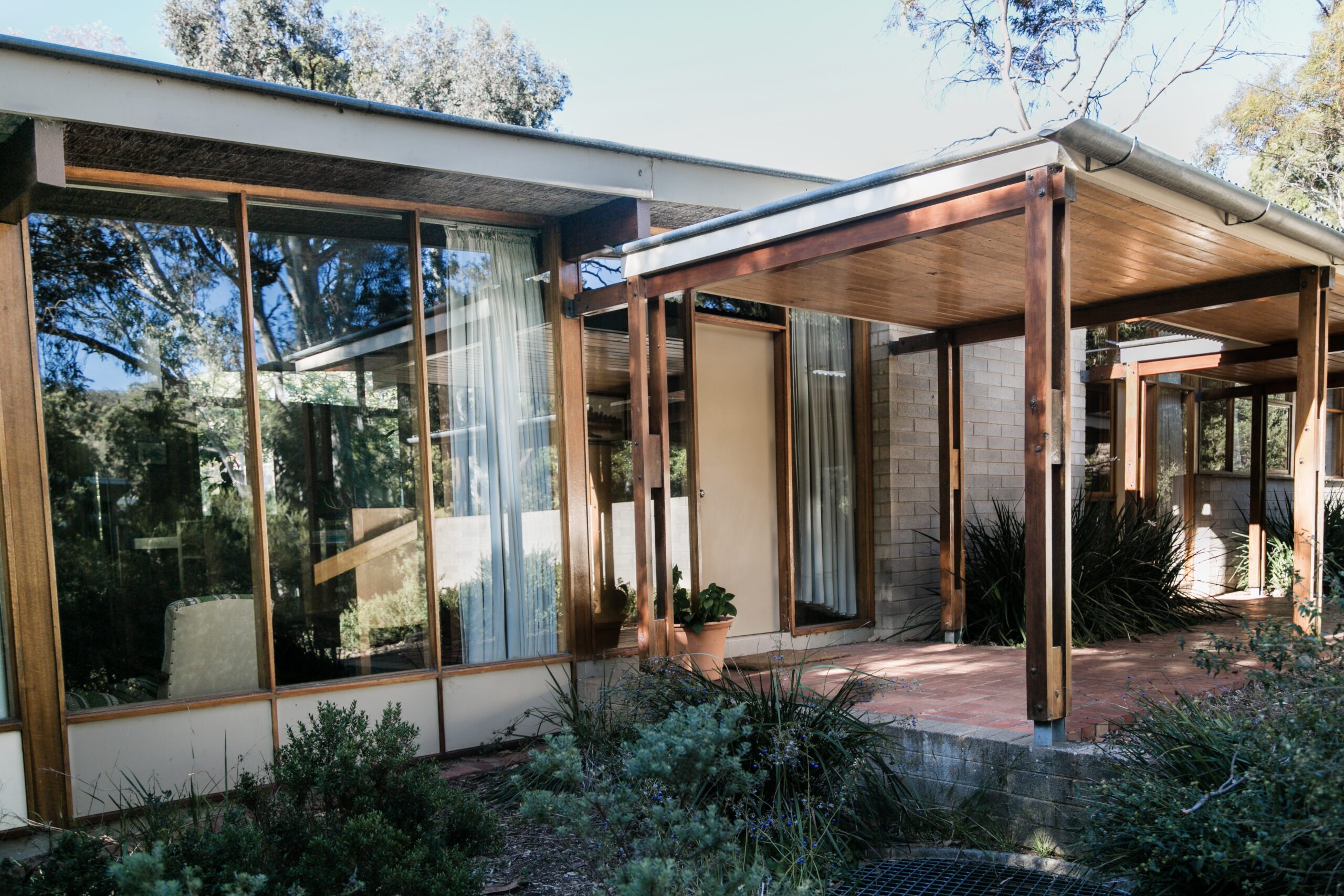
Inside, every surface speaks to a careful appreciation for materials. Honeyed oak shelves float against warm timber-panelled walls, their rich grain glowing softly with decades of life. In the main bedroom, pendant lights are suspended from a sculpted wooden feature, a detail the owners see as a hallmark of Dickson’s craftsmanship. It’s the kind of beauty that doesn’t reveal itself all at once—it deepens the longer you live with it.
The story of how the owners came to live here is woven into the home’s history. For years, they lived next door, sharing tea with the architect’s relatives and hearing stories about the house. That affection was contagious, and when the opportunity arose, they stepped into stewardship of the home with a sense of inheritance rather than acquisition. They felt a responsibility to preserve it, to protect its essence for the future.
This philosophy informs the way they live here. It’s a home where less truly is more. There is no need for over-furnishing or embellishment—the architecture itself provides all the warmth and presence a space could need. When asked what they would tell future owners, their advice is clear: don’t change a thing—just enjoy.
In a time when renovations often strip away the past, this mid-century home stands as proof that timeless design doesn’t require reinvention. Rooted in place, purpose, and human experience, it remains modern yet grounded, light-filled yet intimate. It is a reminder that good architecture doesn’t simply shelter life—it shapes it, quietly, beautifully, every single day.
